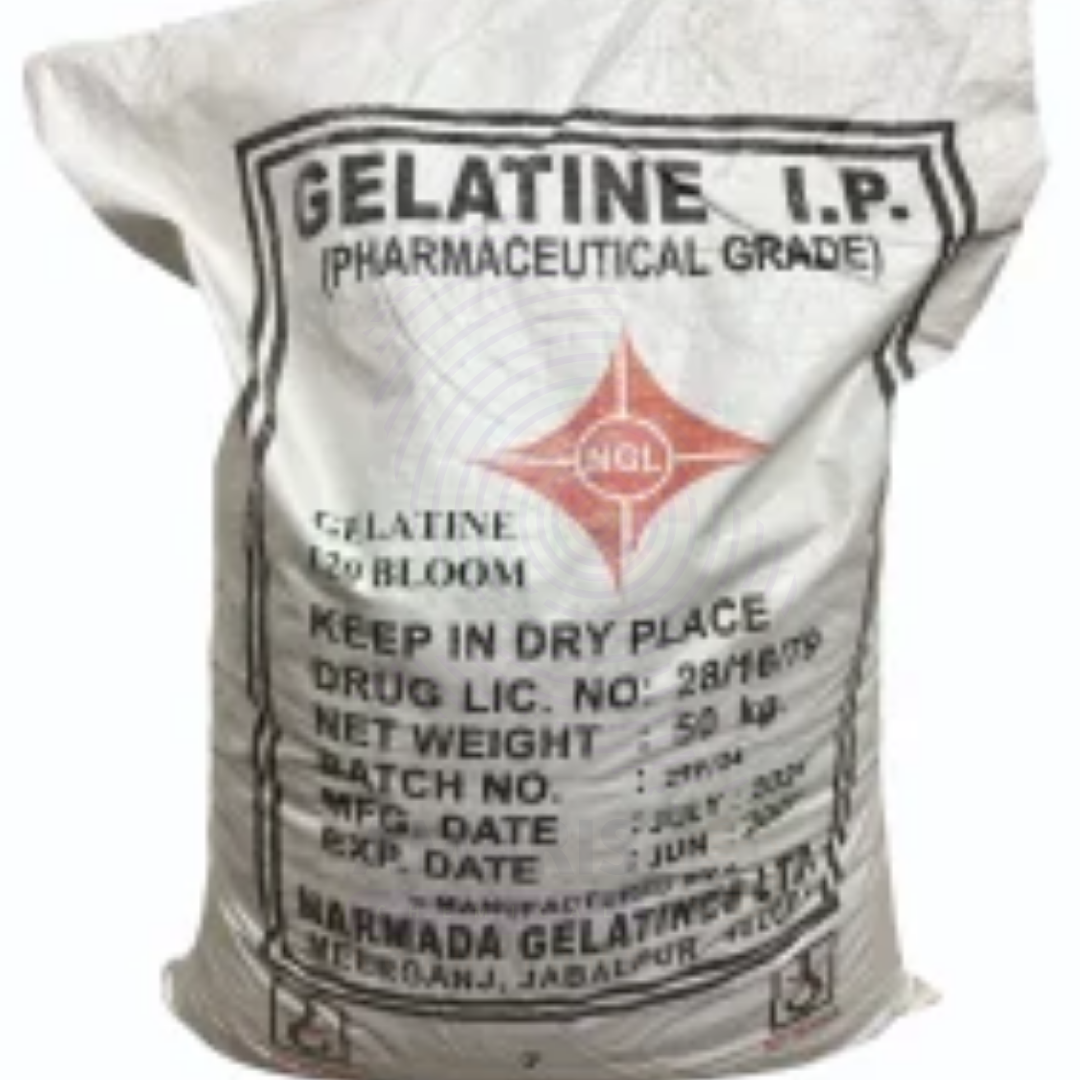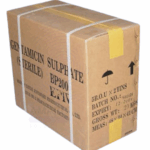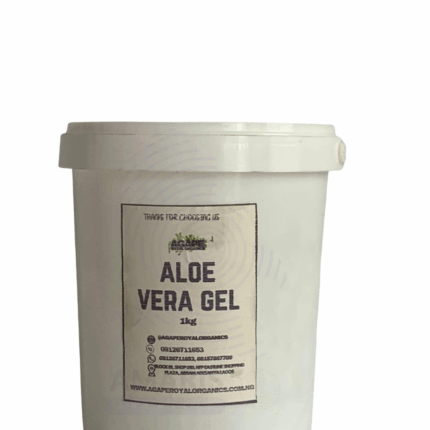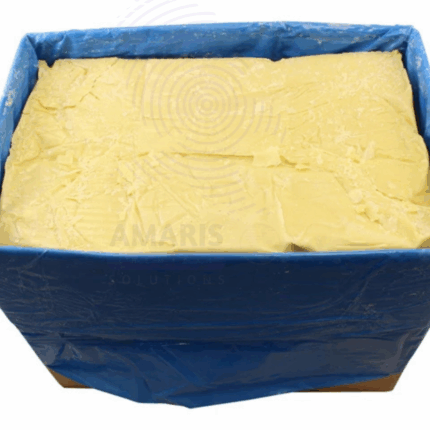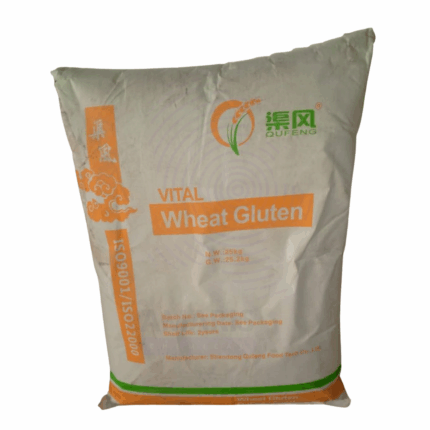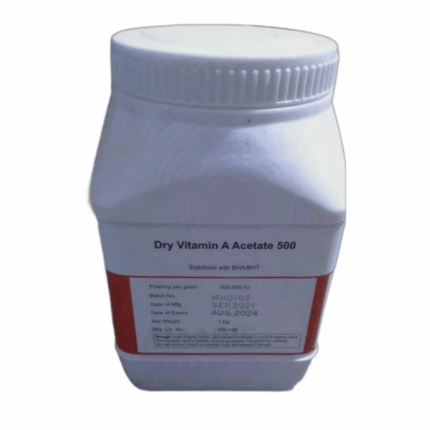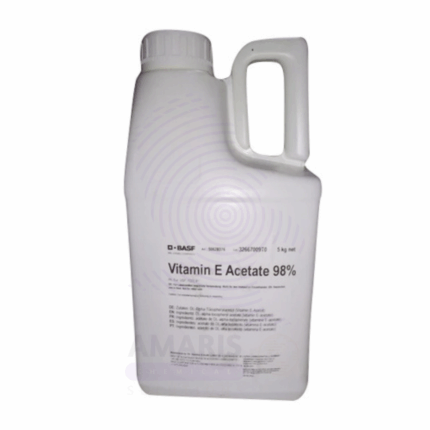Gelatin Powder 180 Bloom
Whatsapp Order
Gelatin Powder 180 Bloom is a high-quality, partially hydrolyzed collagen protein derived primarily from the skin, bones, and connective tissues of animals such as pigs and cows. The “180 Bloom” rating indicates its gel strength, meaning it forms a firm gel, making it suitable for various industrial, food, pharmaceutical, and cosmetic applications. Gelatin is a natural biopolymer, pale yellow to off-white in color, odorless, and tasteless. It is widely used due to its excellent gelling, film-forming, emulsifying, and stabilizing properties. The powder form offers ease of handling, storage, and precise dosing.
Description
Table of Contents
Toggle
Gelatin Powder 180 Bloom
Primary Uses
- Food Industry
- Used as a gelling agent in desserts such as jellies, gummy candies, marshmallows, and panna cotta.
- Functions as a stabilizer and thickener in dairy products like yogurt, ice cream, and cream cheese to improve texture and mouthfeel.
- Acts as a clarifying agent in beverages including beer, wine, and juices.
- Utilized in meat products (sausages, ham) to improve texture, moisture retention, and sliceability.
- Serves as a film-former in edible coatings to prolong shelf life of fruits and vegetables.
- Pharmaceutical Industry
- Used extensively in the manufacture of hard and soft gelatin capsules for drug delivery.
- Employed as a binder and coating agent in tablet formulations.
- Used in plasma expanders and wound dressings due to biocompatibility and biodegradability.
- Cosmetic and Personal Care Industry
- Functions as a thickener, film-former, and moisturizer in creams, lotions, face masks, and hair care products.
- Used in collagen-based skincare products for its skin-firming and hydration benefits.
- Industrial Applications
- Employed in photographic films and papers as a binding and coating agent.
- Used in the production of gelatin-based adhesives and sizing agents in the paper and textile industries.
Secondary Uses
- Biomedical Research
- Used as a substrate for cell culture and tissue engineering scaffolds due to its biocompatibility.
- Utilized in the production of biodegradable microspheres and drug delivery systems.
- Printing and Packaging
- Functions as a binding agent in specialty inks and coatings.
KEY PRODUCT FEATURES
1. Basic Identification Attributes
- Chemical Name: Gelatin (partially hydrolyzed collagen protein)
- Common/Trade Name: Gelatin Powder 180 Bloom
- CAS Number: 9000-70-8
- HS Code: 3503.00
- Molecular Formula: Protein polymer (complex)
- Synonyms: Gelatin Type A, Hydrolyzed collagen, Animal gelatin
2. Physical & Chemical Properties
- Physical State: Fine powder
- Color & Odor: Pale yellow to off-white; virtually odorless
- Bloom Strength: 180 (high gel strength)
- Solubility: Soluble in hot water; insoluble in cold water
- pH: Typically 4.5–6.5 in aqueous solution
- Melting Point: Gel melts at ~35 °C (body temperature gelation)
- Viscosity: Moderate viscosity solutions depending on concentration and Bloom number
3. Safety & Hazard Attributes
- Hazard Class (GHS): Generally regarded as safe (GRAS) for food and pharmaceutical use
- Toxicity: Non-toxic and biodegradable
- Exposure Limits: No specific occupational limits; standard food-grade hygiene recommended
4. Storage & Handling Attributes
- Storage Conditions: Store in a cool, dry, and well-ventilated area, protected from moisture and contaminants
- Container Type: Food-grade sealed bags or containers
- Shelf Life: 24–36 months when stored properly
- Handling Precautions: Avoid dust generation and moisture exposure to prevent caking
5. Regulatory & Compliance Attributes
- Approved by FDA, EFSA, and other regulatory bodies for food, pharmaceutical, and cosmetic applications
- Complies with USP/NF standards where applicable
6. Environmental & Health Impact
- Biodegradability: Readily biodegradable and environmentally friendly
- Ecotoxicity: Low toxicity to aquatic organisms
- Bioaccumulation: Not expected to bioaccumulate
- Carcinogenicity/Mutagenicity: Not classified; safe for human use
SAFETY HANDLING PRECAUTIONS
Safety Handling Precautions
- PPE Required: Dust mask, gloves, and eye protection recommended when handling large quantities
- Handling Guidelines: Minimize dust generation; use in well-ventilated areas
- Storage Measures: Keep container sealed and dry; avoid contamination
- Hygiene Practices: Wash hands after handling; avoid inhalation of dust
First Aid Measures
- Inhalation: Move to fresh air; seek medical attention if irritation develops
- Skin Contact: Wash skin with soap and water; seek medical advice if irritation occurs
- Eye Contact: Rinse eyes thoroughly with water for at least 15 minutes; consult a physician if irritation persists
- Ingestion: Generally recognized as safe; rinse mouth if discomfort occurs
Firefighting Measures
- Fire Hazards: Combustible solid; dust may form explosive mixtures with air
- Extinguishing Media: Water spray, foam, dry chemical, carbon dioxide (CO₂)
- Special Precautions: Use proper dust control and avoid ignition sources
- Decomposition Products: Carbon oxides and nitrogen oxides on combustion
Related products
Aloe Vera Gel
Aloe Vera Gel is a clear, jelly-like substance extracted from the inner leaf of the Aloe vera plant. It is widely used in skincare for its soothing, hydrating, and healing properties. Rich in vitamins (especially A, C, and E), enzymes, and amino acids, Aloe Vera Gel is commonly applied to treat sunburns, minor cuts, skin irritation, and dryness. It also has mild anti-inflammatory and antibacterial effects, making it a popular natural remedy in both cosmetic and medicinal products.
Apple Liquid Flavor food grade
Apple Liquid Flavor Food Grade is a high-quality, concentrated flavoring agent derived to impart the natural, sweet, and crisp taste of fresh apples. It is designed for use in food and beverage formulations, providing consistent flavor performance and stability. This liquid flavoring is soluble in water and alcohol-based systems, making it versatile for a wide range of culinary and industrial food applications including beverages, baked goods, confectionery, dairy products, and more. The product complies with food safety standards and is manufactured under strict quality controls to ensure purity and safety.
Cocoa Butter
Cocoa Butter, also known as Theobroma oil, is a pale-yellow, edible fat extracted from cocoa beans, primarily from Theobroma cacao. It has a smooth, creamy texture and a mild, characteristic chocolate aroma. Cocoa Butter is solid at room temperature but melts near body temperature, which gives it a luxurious feel when applied to skin or consumed. It is highly valued for its emollient, moisturizing, and protective properties. Cocoa Butter is widely used in cosmetics, pharmaceuticals, food, and confectionery industries. Its stable composition rich in fatty acids such as stearic, palmitic, and oleic acids imparts excellent oxidative stability and a long shelf life.
Glycerin
$ 1.20
Glycerin, also known as glycerol, is a colorless, odorless, viscous liquid with a sweet taste and hygroscopic properties. It is a trihydroxy alcohol (triol) used extensively across food, pharmaceutical, cosmetic, and industrial applications. Food-grade glycerin is produced through hydrolysis, saponification, or transesterification of fats and oils, ensuring compliance with stringent purity standards. It is supplied in bulk (e.g., 250kg drums) for large-scale applications where non-toxic, biodegradable humectants or solvents are required. Glycerin is widely appreciated for its moisture-retaining ability, solubility, lubricity, and stabilizing properties.
High Gluten Wheat Flour
High Gluten Wheat Flour is a finely milled powder derived from hard wheat varieties known for their high protein content, typically ranging from 12% to 14.5%. This flour has a superior gluten-forming capacity which imparts strong dough elasticity and excellent gas retention properties. It appears as an off-white to pale yellow powder with a neutral to slightly nutty aroma. High Gluten Wheat Flour is prized in baking industries and food manufacturing for producing products with enhanced chewiness, volume, and texture. It is essential for applications requiring strong dough structure and resilience.
Vitamin A Acetate powder
Vitamin A Acetate Powder is a pale yellow, fine powder used as a stable form of vitamin A in nutritional supplements, pharmaceuticals, and cosmetic formulations. It is essential for vision, immune function, and skin health. The Extra Pure grade ensures high potency and minimal impurities, suitable for analytical and formulation purposes. Due to its sensitivity to light and air, it requires careful storage and handling to maintain stability and effectiveness.
Vitamin E Acetate Oily
Vitamin E Acetate Oily, also known as DL-Alpha-Tocopheryl Acetate, is a synthetic, oil-soluble form of Vitamin E with high purity and exceptional oxidative stability. This viscous liquid is ideal for applications requiring direct incorporation into oil-based systems such as soft gel capsules, cosmetic formulations, and fortified edible oils. Its stability under processing and storage conditions makes it a preferred form of Vitamin E for nutritional, pharmaceutical, cosmetic, and food-grade applications.
Vitamin E Acetate Powder
Vitamin E Acetate Powder, also known as DL-Alpha-Tocopheryl Acetate Powder, is a dry, free-flowing, encapsulated form of Vitamin E, standardized to contain 50% of active DL-Alpha-Tocopheryl Acetate. It is designed for easy handling and uniform mixing in dry formulations and is ideal for use in nutritional supplements, fortified foods, and animal feed. The microencapsulation enhances stability against oxidation, heat, and light, ensuring long shelf life.


 Preservatives(food)
Preservatives(food) Flavor Enhancers
Flavor Enhancers Acidulants
Acidulants Sweeteners
Sweeteners Antioxidants
Antioxidants Colorants(food)
Colorants(food) Nutraceutical Ingredients (food)
Nutraceutical Ingredients (food) Nutrient Supplements
Nutrient Supplements Emulsifiers
Emulsifiers
 Collectors
Collectors Dust Suppressants
Dust Suppressants Explosives and Blasting Agents
Explosives and Blasting Agents Flocculants and Coagulants
Flocculants and Coagulants Frothers
Frothers Leaching Agents
Leaching Agents pH Modifiers
pH Modifiers Precious Metal Extraction Agents
Precious Metal Extraction Agents
 Antioxidants(plastic)
Antioxidants(plastic) Colorants (Pigments, Dyes)
Colorants (Pigments, Dyes) Fillers and Reinforcements
Fillers and Reinforcements Flame Retardants
Flame Retardants Monomers
Monomers Plasticizers
Plasticizers Polymerization Initiators
Polymerization Initiators Stabilizers (UV, Heat)
Stabilizers (UV, Heat)
 Antifoaming Agents
Antifoaming Agents Chelating Agents
Chelating Agents Coagulants and Flocculants
Coagulants and Flocculants Corrosion Inhibitors
Corrosion Inhibitors Disinfectants and Biocides
Disinfectants and Biocides Oxidizing Agents
Oxidizing Agents pH Adjusters
pH Adjusters Scale Inhibitors( water)
Scale Inhibitors( water)
 Antioxidants(cosmetic)
Antioxidants(cosmetic) Emollients
Emollients Fragrances and Essential Oils
Fragrances and Essential Oils Humectants
Humectants Preservatives
Preservatives Surfactants(cosmetic)
Surfactants(cosmetic) Thickeners
Thickeners UV Filters
UV Filters
 Fertilizers
Fertilizers Soil Conditioners
Soil Conditioners Plant Growth Regulators
Plant Growth Regulators Animal Feed Additives
Animal Feed Additives Biostimulants
Biostimulants Pesticides (Herbicides, Insecticides, Fungicides)
Pesticides (Herbicides, Insecticides, Fungicides)
 Active Pharmaceutical Ingredients (APIs)
Active Pharmaceutical Ingredients (APIs) Excipients
Excipients Solvents(pharmaceutical)
Solvents(pharmaceutical) Antibiotics
Antibiotics Antiseptics and Disinfectants
Antiseptics and Disinfectants Vaccine Adjuvants
Vaccine Adjuvants Nutraceutical Ingredients (pharmaceutical)
Nutraceutical Ingredients (pharmaceutical) Analgesics & Antipyretics
Analgesics & Antipyretics
 Analytical Reagents
Analytical Reagents Solvents(lab)
Solvents(lab) Chromatography Chemicals
Chromatography Chemicals Spectroscopy Reagents
Spectroscopy Reagents microbiology-and-cell-culture-reagents
microbiology-and-cell-culture-reagents Molecular Biology Reagents
Molecular Biology Reagents Biochemical Reagents
Biochemical Reagents Inorganic and Organic Standards
Inorganic and Organic Standards Laboratory Safety Chemicals
Laboratory Safety Chemicals Specialty Laboratory Chemicals(Special Laboratory Equipment)
Specialty Laboratory Chemicals(Special Laboratory Equipment)
 Demulsifiers
Demulsifiers Hydraulic Fracturing Fluids
Hydraulic Fracturing Fluids Scale Inhibitors(oil)
Scale Inhibitors(oil) Surfactants(oil)
Surfactants(oil) Drilling Fluids
Drilling Fluids
 Dyes and Pigments
Dyes and Pigments Bleaching Agents
Bleaching Agents Softening Agents
Softening Agents Finishing Agents
Finishing Agents Antistatic Agents
Antistatic Agents
 Admixtures
Admixtures Waterproofing Agents
Waterproofing Agents Sealants and Adhesives
Sealants and Adhesives Curing Compounds
Curing Compounds Concrete Repair Chemicals
Concrete Repair Chemicals Anti-Corrosion Coatings
Anti-Corrosion Coatings
 Surfactants(cleaning)
Surfactants(cleaning) Builders
Builders Enzymes
Enzymes Solvents (Cleaning)
Solvents (Cleaning) Fragrances
Fragrances
 Electronic Chemicals
Electronic Chemicals Catalysts
Catalysts Lubricants
Lubricants Photographic Chemicals
Photographic Chemicals Refrigerants
Refrigerants Automotive chemicals
Automotive chemicals Pyrotechnic Chemicals
Pyrotechnic Chemicals
 Biodegradable Surfactants
Biodegradable Surfactants Bio-based Solvents
Bio-based Solvents Renewable Polymers
Renewable Polymers Carbon Capture Chemicals
Carbon Capture Chemicals Wastewater Treatment Chemicals
Wastewater Treatment Chemicals
 Pigments
Pigments Solvents(paint)
Solvents(paint) Specialty Coatings
Specialty Coatings Binders/Resins
Binders/Resins Additives
Additives Driers
Driers Anti-Corrosion Agents
Anti-Corrosion Agents Functional Coatings
Functional Coatings Application-Specific Coatings
Application-Specific Coatings
 Fresh Herbs
Fresh Herbs Ground Spices
Ground Spices Whole Spices
Whole Spices Spice Blends
Spice Blends Dried Herbs
Dried Herbs
 Leavening Agents
Leavening Agents Dough Conditioners
Dough Conditioners Flour Treatments
Flour Treatments Fat Replacers
Fat Replacers Decoratives
Decoratives Preservatives(baking)
Preservatives(baking)
 Plasticizers & Softeners
Plasticizers & Softeners Reinforcing Agents
Reinforcing Agents Adhesion Promoters
Adhesion Promoters Vulcanizing Agents
Vulcanizing Agents Antidegradants
Antidegradants Blowing Agents
Blowing Agents Fillers & Extenders
Fillers & Extenders Accelerators & Retarders
Accelerators & Retarders